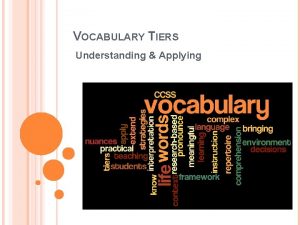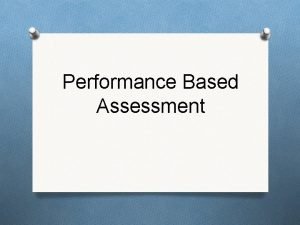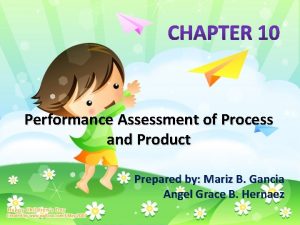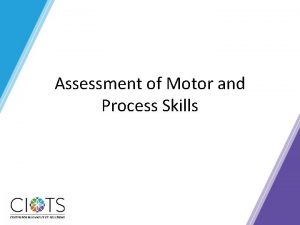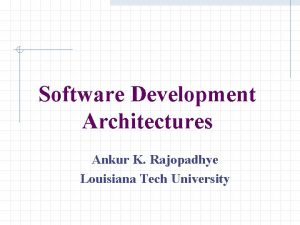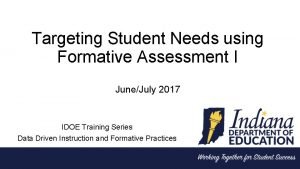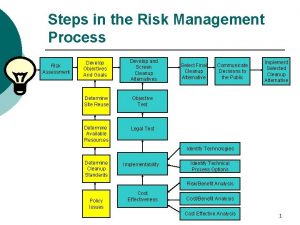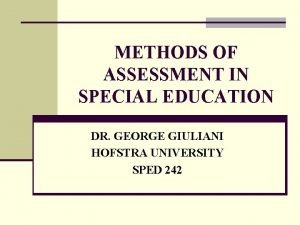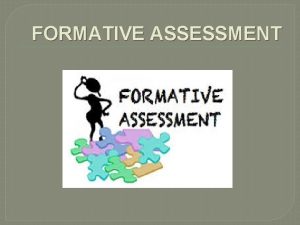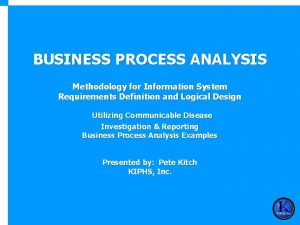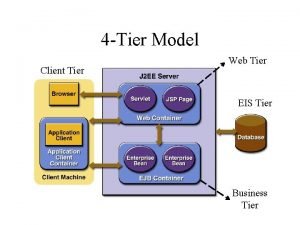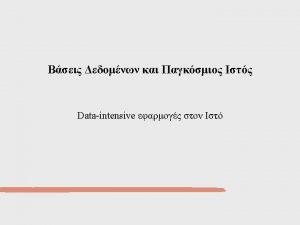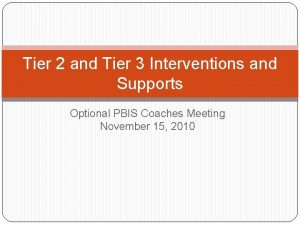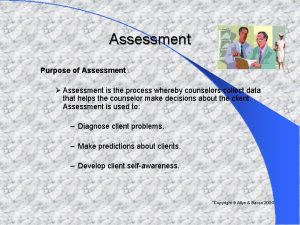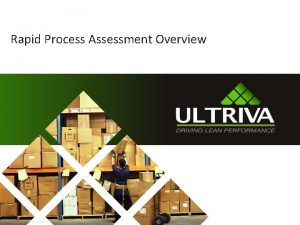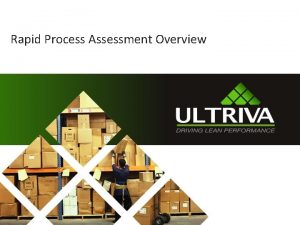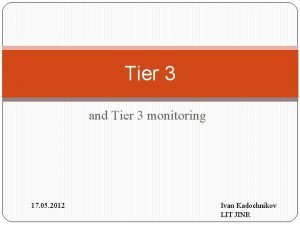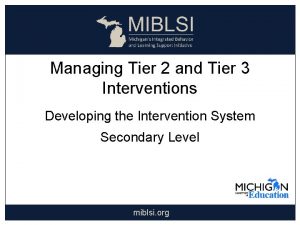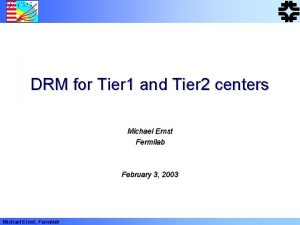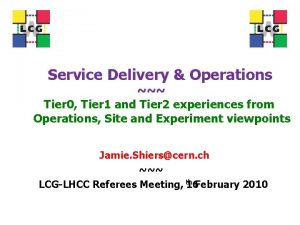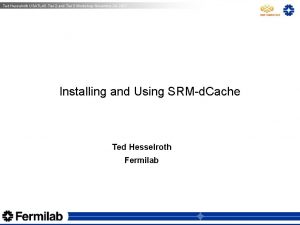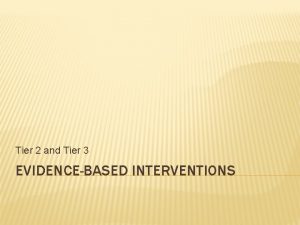Process Assessment with Tier 1 Tier 2 and

















- Slides: 17

Process Assessment with Tier 1, Tier 2, and Tier 3 Treatment Validity Virginia Berninger University of Washington Director, Multidisciplinary Learning Disabilities Research Center, Literacy Trek Longitudinal Study, and The Write Stuff Intervention Project, and School Psychology Internship Program vwb@u. washington. edu CASP March 4, 2005 Riverside, CA

Process Assessment for Reading with Treatment Validity SKILL: Real Word Reading in Grades 1 to 3 (ages 6 to 9) WIAT II Word Reading accuracy and TOWRE Sight Word Efficiency rate PROCESSES: • PAL Receptive Coding (orthographic STM/WM) • PAL Syllables and Phonemes (phonological) • PAL RAN Letter and Word (rapid automatic naming) • WISC-IV Vocabulary subtest

Process Assessment for Reading with Treatment Validity SKILL: Real Word Reading in Grades 4 to 6 (ages 9 to 12) WIAT II Word Reading accuracy and TOWRE Sight Word Efficiency rate PROCESSES: • PAL Receptive and Expressive Coding (orthographic STM/WM) • PAL Syllables, Phonemes, and Rimes (phonological) • PAL Word Choice (orthographic LTM) • PAL RAN Letter and Word (rapid automatic naming) • WISC-IV Vocabulary subtest

Process Assessment for Reading with Treatment Validity SKILL: Phonological Decoding in Grades 1 to 3 (ages 6 to 9) WIAT II Pseudoword Reading accuracy and TOWRE Phonemic Reading rate PROCESSES: • PAL Receptive Coding (orthographic STM/WM) • PAL Syllables and Phonemes (phonological) • PAL RAN Letter and Word (rapid automatic naming) • CTOPP Nonword Repetition (phonological STM/WM)

Process Assessment for Reading with Treatment Validity SKILL: Phonological Decoding in Grades 4 to 6 (ages 9 - 12) WIAT II Pseudoword Reading accuracy and TOWRE Phonemic Reading rate PROCESSES: • PAL Receptive Coding (orthographic STM/WM) • PAL Syllables, Phonemes, and Rimes (phonological) • PAL RAN Letter and Word (rapid automatic naming) • CTOPP Nonword Repetition (phonological STM/WM)

Process Assessment for Reading with Treatment Validity SKILL: WIAT II or WJ-III Reading Comprehension in Grades 1 to 3 (ages 6 to 9) PROCESES: • WISC-IV Verbal Comprehension Index • PAL Sentence Sense (silent reading fluency) • WIAT II Word Reading and Pseudoword Reading and Towre Sight Word and Phonemic Reading Efficiency

Process Assessment for Reading with Treatment Validity • • • SKILL: WIAT II or WJ III Reading Comprehension in Grades 4 to 6 (ages 9 to 12) PROCESSES: WISC-IV Verbal Comprehension Index PAL Sentence Sense (silent reading fluency) PAL Verbal Working Memory WISC-IV Working Memory Index WIAT II Word Reading and Pseudoword Reading and Towre Sight Word and Phonemic Reading Efficiency

Process Assessment for Writing with Treatment Validity SKILL: Handwriting Automaticity in Grades 1 to 3 (ages 6 to 9) PAL Alphabet Writing and Copy A and B PROCESSES: • PAL Receptive Coding (orthographic STM/WM) • PAL Finger Repetition and Finger Succession (grapho-motor planning)

Process Assessment for Writing with Treatment Validity SKILL: Handwriting Automaticity in Grades 4 to 6 (ages 9 to 12) PAL Alphabet Writing and Copy A and B PROCESSES: • PAL Receptive and Expressive Coding (orthographic STM/WM) • PAL Finger Repetition and Finger Succession (grapho-motor planning)

Process Assessment for Writing with Treatment Validity SKILL: WIAT II or WRAT 4 Spelling in Grades 1 to 3 (ages 6 to 9) PROCESSES: • WISC-IV Vocabulary subtest • PAL Receptive Coding (orthographic STM/WM) • CTOPP Nonword Repetition (phonological STM/WM) • PAL Syllables, Phonemes (phonological)

Process Assessment for Writing with Treatment Validity SKILL: WIAT II or WRAT 4 Spelling in Grades 4 to 6 (ages 9 to 12) PROCESSES: • WISC-IV Vocabulary subtest • PAL Word Choice (orthographic LTM) • PAL Receptive and Expressive Coding (orthographic STM/WM) • CTOPP Nonword Repetition (phonological STM/WM) • PAL Syllables, Phonemes, Rimes (phonological)

Process Assessment for Writing with Treatment Validity SKILL: Compositional Fluency in Grades 1 to 3 (ages 6 to 9) (Prompts in PAL Test Manual) PROCESSES: • PAL Alphabet Writing (handwriting automaticity) • WIAT II Spelling

Process Assessment for Writing with Treatment Validity SKILL: Compositional Fluency in Grades 4 to 6 (ages 9 to 12) (Prompts in PAL Test Manual) PROCESSES: • PAL Alphabet Writing (handwriting automaticity) • WIAT II Spelling • PAL Finger Succession (grapho-motor planning) • WISC-IV Working Memory Index and Processing Speed Index

Process Assessment for Writing with Treatment Validity SKILL: Compositional Quality in Grades 1 to 3 (ages 6 to 9) WIAT II Written Expression PROCESSES: • PAL Alphabet Writing (handwriting automaticity) • WISC-IV Verbal Comprehension

Process Assessment for Writing with Treatment Validity SKILL: Compositional Quality in Grades 4 to 6 (ages 9 to 12) WIAT II Written Expression PROCESSES: • PAL Alphabet Writing (handwriting automaticity) • WISC-IV Verbal Comprehension Index and • Working Memory Index

Further Reading on Importance of Assessment for Treatment Planning 1. Berninger, V. , Dunn, A. , & Alper, T. (2004). Integrated models for branching assessment, instructional assessment, and profile assessment. In A. Prifitera, D. Saklofske, L. Weiss, & E. Rolfhus (Eds. ), WISC-IV Clinical use and interpretation (pp. 151 -185). San Diego, CA: Academic Press. See Ted Alper’s cases from the American School in London. 2. Berninger, V. , Thomson, J. , & L. O’Donnell. (2004). Differential diagnosis of dyslexia, dysgraphia, language learning disability, and other learning disabilities. In A. Prifitera, D. Saklofske, L. Weiss, & E. Rolfhus (Eds. ), WISC-IV Clinical use and interpretation. San Diego, CA: Academic Press.

Further Information on Tier 1, Tier 2, and Tier 3 Treatment CASP Workshop Afternoon March 4, 2005 Join Us!
 Vocabulary pyramid
Vocabulary pyramid Tier 2 words examples
Tier 2 words examples Performance based assessment
Performance based assessment Five steps of performance process and product
Five steps of performance process and product Assessment motor and process skills
Assessment motor and process skills Portfolio assessment matches assessment to teaching
Portfolio assessment matches assessment to teaching Define dynamic assessment
Define dynamic assessment Portfolio assessment matches assessment to teaching
Portfolio assessment matches assessment to teaching N tier architecture advantages and disadvantages
N tier architecture advantages and disadvantages Bones practical exam
Bones practical exam Condylar and coronoid process
Condylar and coronoid process Process based assessment
Process based assessment Formative assessment process
Formative assessment process Steps in risk management process
Steps in risk management process Performance rubrics criteria
Performance rubrics criteria Assessment process in special education
Assessment process in special education Attributes of effective formative assessment
Attributes of effective formative assessment Business process analysis methodology
Business process analysis methodology
